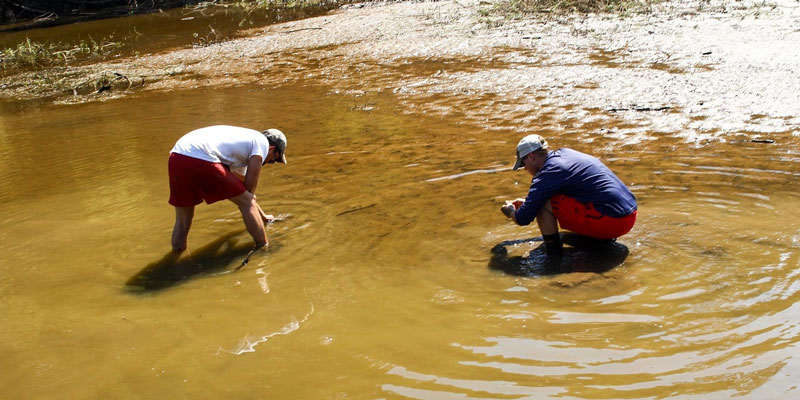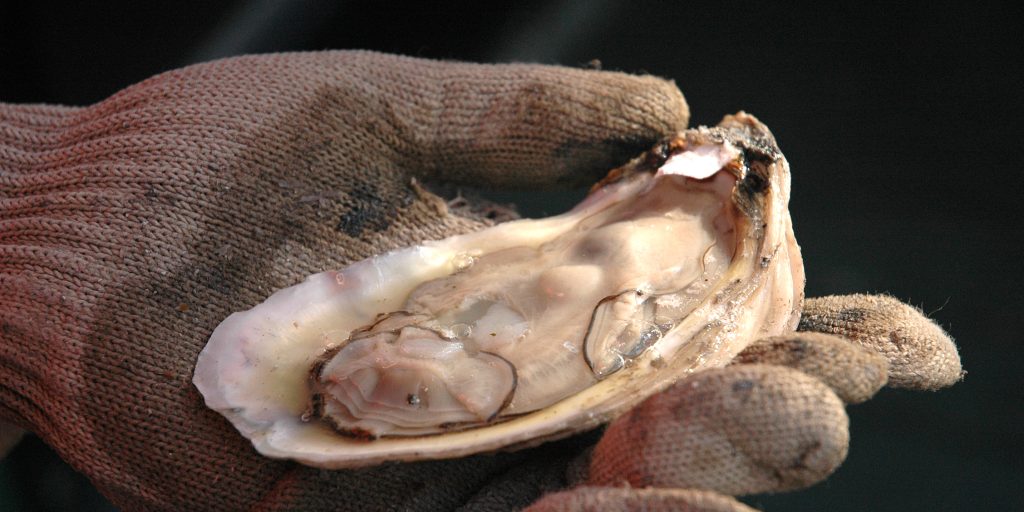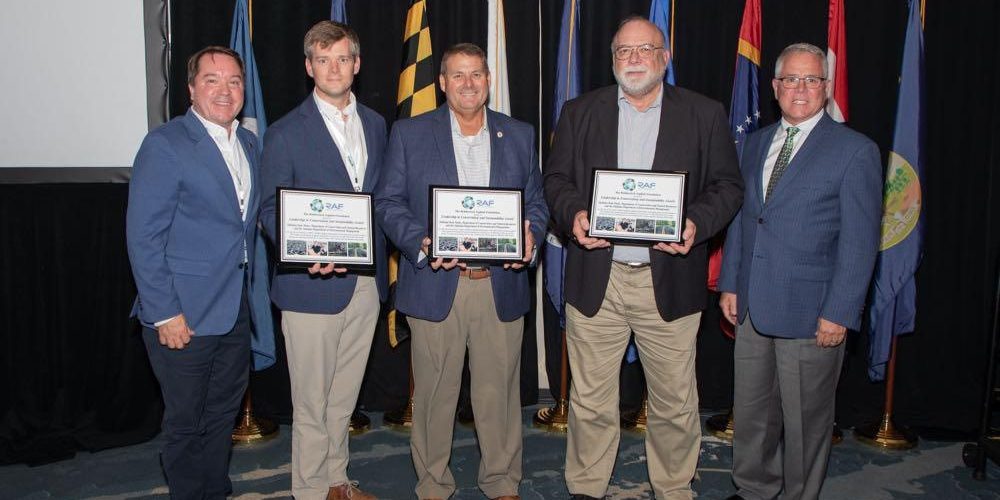While many property owners used this fall’s Coosa River drawdown to make repairs to boathouses, piers and other structures along the water’s edge, Alabama Power biologists were on another mission.
APC Environmental Affairs employees worked with members of the U.S. Fish and Wildlife Service (USFWS) and the Alabama Department of Conservation and Natural Resources (ADCNR) to protect rare snails on Lay and Mitchell lakes.
The first step involved surveying threatened species — literally by counting the number of snails in a given area.
Two species of freshwater aquatic snails listed under the Endangered Species Act, the rough hornsnail and Tulotoma snail, call the Coosa River home. Both are native to Alabama and are found nowhere else in the world.
“We do a manual count, which gives you an estimate of the number of that species within a certain area,” said Jason Carlee, APC Environmental Affairs supervisor. “You can then multiply that number by the area of the lake bottom affected by the drawdown to estimate how much of the population is affected.”
The work wasn’t limited to surveying. The biologists were also charged with saving snails affected by the drawdown. Snails that might have had trouble navigating to the lower lake levels were picked up along the riverbank and returned to the water.
“The primary objectives at Lay Lake and Lake Mitchell were surveying known populations of Tulotoma and rough hornsnail, searching for new populations of the species and relocating species to suitable habitat in deeper water,” said Chad Fitch, a biologist with Alabama Power.
The snails live anywhere from one to 30 feet below the shoreline but prefer to live just below the water’s edge, according to Carlee.
“The lowering of the water forces the snails to follow the water and, as they move, they can get trapped by vegetation or stuck behind a log or rock,” Carlee said. “Our priority is to identify new populations and to salvage as many snails as we can.”
The teams focused on areas with known populations and salvaged snails when the water was at its lowest level to make the most significant positive impact. A previous survey and salvage effort was conducted during the 2013 drawdown, and additional snail surveys were done in 2009 and 2012.
“Part of our week was spent searching for new populations of rough hornsnails, and we found them,” said Fitch. “Before this week, the species was only known to occur in four different locations on Mitchell Reservoir, but we found them in three other creeks this week as well as along the shorelines in the main channel.”
Several other steps have been taken to protect the snails. For example, the timing and frequency of the fall drawdowns have been adjusted to benefit the species.
“Historically for Lay and Mitchell, there were drawdowns every year. Then they went to every other year. Since the discovery of rough hornsnails at Lake Mitchell and at Yellowleaf Creek on Lay Reservoir, drawdowns are conducted every five years to decrease impacts to the snails,” Fitch said.
Tracks left by the snails leading from the riverbank to the water indicate that the species can adjust to water level fluctuations. Lake levels are now lowered very slowly over a three-day period, to give snails more time to follow the dropping water.
Alabama Power works with USFWS and ADCNR to find ways to protect and improve habitat conditions for snails and other aquatic species as part of its license to operate dams issued by the Federal Energy Regulatory Commission. All the hard work is paying off. The Tulotoma snail was downlisted from endangered to threatened in 2011 as populations below Coosa River dams increased. It was the first time a freshwater species of mollusks, which includes clams, mussels and slugs, was downlisted. New populations of rough hornsnail provide hope for its recovery.
Results from this year’s snail survey will help regulators determine the impact of water level fluctuations on species like these snails and help provide guidance concerning future drawdowns.
This story originally appeared in Shorelines magazine.
(Courtesy of Alabama NewsCenter)













